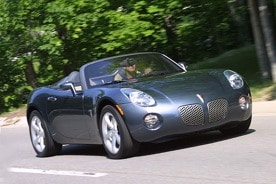
2006 Pontiac Solstice -- Finally! Excitement From the "We Build Excitement" Division!
Pontiac had been remiss in its "excitement" duties for some time when Bob Lutz arrived at GM in 2001. The Firebird was on its last legs, and there wasn't another rear-drive, sporty model on the horizon. Lutz addressed the issue with a slinky, two-seat roadster concept car displayed at the 2002 Detroit auto show. The name on the concept was "Solstice," and three years later it arrived in Pontiac showrooms looking very much like the sleek show car Mr. Lutz drove on stage in Detroit. A high-performance model dubbed the GXP came a year later, as did a corporate Saturn twin named Sky. Both GM models offer stunning looks and respectable performance, though sports car purists often prefer the lighter, more responsive Mazda Miata.
• First two-seat roadster in Pontiac's history
• Corporate twin -- Saturn Sky
• Edmunds Publishing Company turns 40 years old
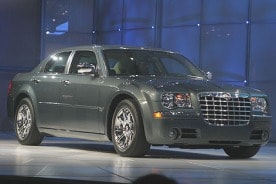
2005 Chrysler 300 -- The Great American Sedan Returns
Excitement -- real excitement -- over a new American sedan pretty much evaporated after the first gas crisis of the 1970s. Sure, the Ford Taurus and Chrysler LH sedans were both innovative, and sold well as a result. But the interest surrounding those models had more to do with America finally producing a four-door car worthy of serious consideration in the face of Japan's ever encroaching sales numbers. However, when the all-new Chrysler 300 hit in the fall of 2004, there was a palpable sense of "Finally, a real American car worthy of real American desire." Not surprisingly, the 300 displayed many of the traits not seen on mainstream sedans in almost 30 years: a large, rear-wheel-drive platform offering a roomy interior and retro-styling. Topping it off was an available 340-horsepower V8 engine sporting four of the best known letters in automotive history: H-E-M-I.
• An all-new, full-size, rear-wheel-drive sedan using Mercedes E-Class components
• Corporate twin the Dodge Charger sedan
• CBS News anchor Dan Rather retires after 24 years
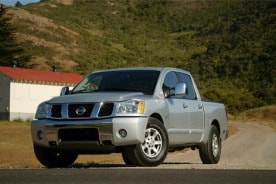
2004 Nissan Titan -- Japan Jumps Into the Full-Size Truck Ring
Despite the ever growing presence of import cars in the U.S. market, there's one segment in which the Big Three had never been challenged, until 2004. That's the year Nissan introduced its Titan full-sized pickup truck. Unlike the measured, somewhat tepid attempts made by Toyota over the preceding decade, the Titan was a real full-size truck in every sense. Its standard 5.6-liter 305-horsepower V8 provided more horsepower than the standard engines in all of the domestic offerings, while its ride and handling characteristics were more carlike than its American rivals. With only two body styles, and only the one engine choice, the Titan was short on configuration options. That ultimately kept the truck from seriously threatening the F-150, Ram or Silverado. But the first volley had been fired.
• First full-size truck offered by a non-domestic automaker
• More standard horsepower and better ride/handling characteristics than the competition
• Martha Stewart is sentenced to five months in prison for obstruction of justice
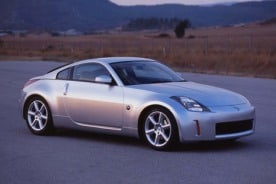
2003 Nissan 350Z -- Confirming the Turnaround
In 1999, many industry experts and observers wondered how much longer Nissan would be selling cars in the U.S. Sales were in free fall and the product lineup displayed less charisma than Shrek. But over the next four years Nissan would unleash a flood of all-new models, culminating in the revival of the brand's most revered U.S. nameplate, the Z car. With its smooth and powerful 3.5-liter V6 nestled in a stiff platform with slot-carlike handling, the 350Z was more than just the latest take on Nissan's sports car. It was clear confirmation the company had reclaimed its mojo. Recent market challenges suggest Nissan needs yet another shot of product adrenaline, but the 350Z remains a desirable coupe and convertible for buyers seeking performance, style and value.
• First Z car after a six-year absence
• Corporate twin -- Infiniti G35 Coupe
• Saddam Hussein is captured by American troops
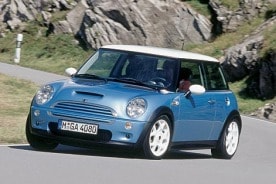
2002 Mini Cooper -- The British Icon Revived... by Germans
Reviving an automotive icon is a dicey task. It's much easier (and more common) for a manufacturer to get it wrong than to get it right. And if the manufacturer performing the retro revival isn't even the same one responsible for the original, well, things could get ugly very quickly. But the all-new 2002 Mini Cooper, reworked by parent company BMW, wasn't just a proper homage to the original, it was a full-fledged market phenomenon. Suddenly, in a country bursting with SUVs, small cars were cool again. The Mini's styling perfectly straddled that line between retro cool and modern chic, while the car's handling ensured a thrill ride was always just a steering wheel twist away. If every retro revival was this successful, we wouldn't need any new nameplates.
• First full redesign of the Mini Cooper since its 1959 debut
• First model to define the "premium small car" market for U.S. buyers
• MTV reality show "The Osbournes" premiered
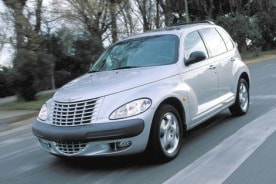
2001 Chrysler PT Cruiser -- The Coolest Neon Ever
Starting with a modified Dodge Neon platform, Chrysler created the retro-cool PT Cruiser in 2001. With a base price under $17,000 and a readily reconfigurable interior (the removable rear seats and adjustable parcel shelf offered a wealth of possibilities), the PT Cruiser provided an unbeatable combination of style, utility and value. Throw in the confident -- almost fun -- driving dynamics and it was easily the "coolest" car of 2001. PTs sold above MSRP for most of that first year, and everyone from Hollywood heavies (Tom Hanks bought one) to aftermarket companies used them for promotional purposes. Chrysler waited too long before finally upgrading the PT Cruiser's pedestrian powertrain, but the original model continues to represent a successful blending of fun and functionality.
• The first "cool" economy crossover vehicle
• Some initial production cars sold for close to twice their MSRP
• Harry Potter and the Sorcerer's Stone opened in theaters
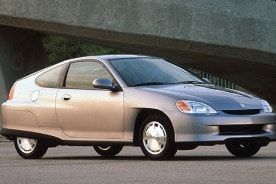
2000 Honda Insight -- Heralding the Hybrid
As the first hybrid model available in the U.S., Honda's Insight afforded a glimpse where things were headed. The tiny two-seater offered up to 70 mpg on the freeway and actually shut its engine off at stoplights (a novel concept in 2000). While most automotive publications barely gave it a passing notice (gas was still just $1.50 a gallon), we knew it represented the future of personal transportation. The following year Toyota brought over its Japanese-market Prius, but it wasn't until the redesigned Prius hit in 2004 that people started to see hybrids as a viable alternative to traditional vehicles. We even had plenty of people tell us the Prius should have been Most Significant for 2004. We told them they were four years late to the hybrid party.
• First hybrid for sale in the U.S. market
• First car rated for 70 mpg by the EPA
• American Online buys Time Warner for $165 billion
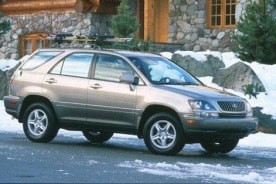
1999 Lexus RX 300 -- The SUV Crosses Over
The idea of a car that looks like an SUV seemed downright silly to many industry experts in 1999. The Lexus RX 300 was heavily based on the Toyota Camry/Lexus ES 300 platform and featured a 3.0-liter 220-horsepower V6 hooked to a four-speed automatic transmission. Offered in both two-wheel drive and all-wheel drive, the RX 300 was supposed to provide buyers with the spacious cabin and rough-and-tumble image of an SUV while maintaining the confident handling and comfortable ride qualities of a sedan. The RX 300 single-handedly turned Lexus into America's top-selling luxury division -- a title it has retained ever since. The term "crossover" didn't exist in 1999, but the RX 300 first defined the concept, and then legitimized it as "the next big thing" in the automotive market. Numerous models have entered the midsize crossover segment in the past seven years, but the RX 300 was the first.
• The car-based, midsize SUV that started the "crossover" craze
• The model that made Lexus the No. 1 selling luxury brand in the U.S.
• The $30,000 Blair Witch Project grosses $125 million
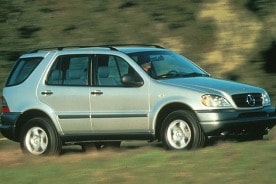
1998 Mercedes-Benz ML-Class -- Built by Americans, Built for Americans
The annals of automotive history will likely mark 1998 as the "Year of the Luxury SUV." This was the year Lexus introduced its LX 470, Lincoln introduced its Navigator and Mercedes-Benz introduced its ML320. But where the Lexus and Lincoln were simply rebadged versions of existing lower-line models, the ML was an all-new, purpose-built luxury SUV from the ground up. It was also the first M-B product built in America and designed, primarily, for the American market. Initial quality issues with the ML-Class somewhat damaged the brand's image, but capable off-road abilities and a luxurious on-road demeanor -- along with improved build quality -- have kept the ML at the top of Mercedes' sales charts. The initial 3.2-liter V6 drivetrain was eventually joined by V8s of various sizes, including a 500-horsepower 6.3-liter V8 engine built by AMG.
• First Mercedes-Benz product built in the U.S.
• First luxury SUV designed from the ground up as a luxury SUV
• The Seinfeld show ends (with a whimper) in 1998
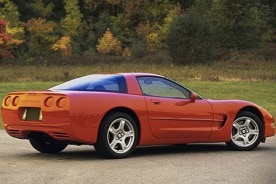
1997 Chevrolet Corvette -- The World Beater
When the C5 Corvette was introduced in 1997, Chevrolet's two-seater had already been in production for over four decades. Throughout the Corvette's history it had done battle with some of the most capable sports cars ever created, including Ford's Cobra, Porsche's 911 and various Ferraris. But the 1997 model marked a watershed moment for "America's Sports Car." That year the Corvette went from capable performance machine to full-fledged exotic slayer. The platform was all-new, the drivetrain was all-new and the exterior shape was all-new. The aluminum 5.7-liter V8 produced an impressive 345 horsepower and was hooked to a rear-mounted, six-speed transmission that helped maintain the car's ideal front/rear weight balance. The Corvette's combination of performance, comfort and price made it an unparalleled performance bargain in 1997. Ten years later it continues to offer exotic-car performance at one-third the price.
• First use of rear-mounted transmission to improve weight distribution
• First year for all-aluminum 5.7-liter LS1 engine
• The most expensive movie ever made, Titanic, is released in theaters
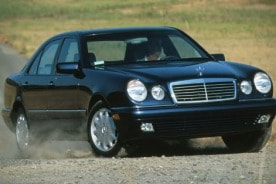
1996 Mercedes-Benz E-Class -- A Trendsetter for the 21st Century
The Mercedes-Benz E-Class has long represented what the German automaker is all about. Certainly the high-end S-Class and trademark SL models generate more publicity, but when it's time to pay the bills the E-Class answers with high-volume sales and consistent customer loyalty. In 1996 M-B's mainstream model underwent a redesign that was a marginal mechanical update (suspension and drivetrain changes were minimal) but an important styling statement. The "four-headlight" look that debuted on the E-Class would come to represent the bulk of U.S.-bound Mercedes products for over a decade. The '96 E-Class also grew larger for improved interior packaging, while engine choices ranged from the 3.2-liter 217-horsepower inline-6 to the 4.2-liter 275-horsepower V8. The 3.0-liter diesel would remain an E-Class hallmark until 1999, when emission restrictions eliminated its availability.
• First use of Mercedes-Benz' "four-headlight" front-end design
• Only diesel engine offered in the midsize luxury sedan segment
• British threatened by outbreak of "mad cow" disease
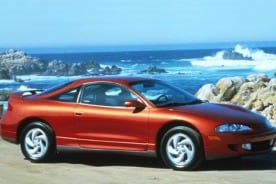
1995 Mitsubishi Eclipse -- An Icon for the new Hot-Rod Generation
While the first-generation Mitsubishi Eclipse was an attractive and capable performance package, the second-generation vehicle was better in every way. A longer, sleeker body riding on an upgraded double A-arm front suspension and multilink rear suspension gave the Eclipse additional stability in each of its four trim levels. The top-of-the-line all-wheel-drive GSX model now sported 210 horsepower, and all versions featured a new interior with wraparound cockpit styling. With the GSX, zero to 60 occurred in less than 7 seconds -- not bad for a $23,000 car. It was this generation of Mitsubishi's Eclipse that would ultimately become an icon in the rising import tuner scene about to explode on the streets of America. It even scored a starring role in the first The Fast and the Furious film.
• All-new model with longer wheelbase and improved handling
• Convertible version with power top and glass rear window debuts in 1996
• Grateful Dead front man Jerry Garcia dies at the age of 53
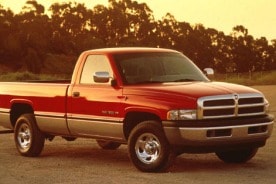
1994 Dodge Ram -- Dodge Trumps the Full-Size Truck Market
Sure, Dodge had been making full-size trucks for decades before the 1994 Ram debuted. But this was the year the Ram went from being little more than a blip on truck sales charts to becoming a class leader against the F-150 and Silverado. All-new "big-rig" styling gave the Ram a distinctive (and menacing) look, while powerful V10 and diesel engines (both available with four-speed automatics) gave it best-in-class tow and payload ratings. The monster center console could swallow a laptop, and even safety was addressed via the first-in-class standard driver-side airbag and optional four-wheel ABS. Sales of the Ram skyrocketed, with nearly all of them coming from previous Ford and Chevy customers. In one year Dodge went from footnote to first-in-class in the full-size truck segment. It's been a three-horse race ever since.
• First year for V10 engine and optional four-speed automatic
• First year for driver-side standard airbag and optional four-wheel ABS
• O.J. Simpson arrested after nationally televised "low-speed" police chase
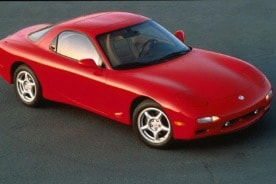
1993 Mazda RX-7 -- Purity of Form, Extremity of Function
After two generations of successful rotary-engined sports cars Mazda was ready to get serious with the all-new RX-7 in 1993. While the first two versions of the car had offered compelling performance and handsome styling, the third-generation RX-7 was a radical shift in design, performance and price. The new car was lighter, smaller and structurally stiffer than the previous car. It also rode on an upgraded suspension that improved handling but gave a rather stiff ride. The twin-turbocharged, two-rotor engine produced a seamless 255 horsepower at 6500 rpm, and the car could get from zero to 60 mph in about 5.5 seconds. Often referred to as "the Japanese Ferrari" the third-generation RX-7 was a fabulously capable vehicle that, unfortunately, couldn't survive a failing economy and rising Japanese yen, both of which conspired to kill U.S. sales after only three years.
• Advanced use of lightweight materials and intelligent packaging saved 200 pounds over previous model
• First RX-7 to use twin-turbochargers, creating over 250 horsepower
• Five arrests made in bombing of World Trade Center in 1993
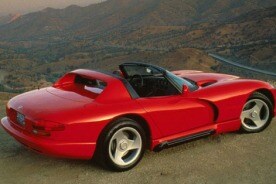
1992 Dodge Viper -- The Return of the American Exotic
In the automotive performance wars of the 21st century, a 400-horsepower 8.0-liter V10 stuffed into a two-seat roadster barely raises an eyebrow. But the thought of such a vehicle, produced by an American company best known for minivans in 1992, was truly revolutionary. The Dodge Viper started as a concept car in 1989, but overwhelming public reaction and a desire by Bob Lutz (then president of Chrysler) to create a production version got the car to dealer showrooms in just three years. Carroll Shelby was a member of the original Viper team, and to some enthusiasts it is essentially a modern-day Cobra successor. Capable of zero to 60 in 4.6 seconds, the Viper reestablished Chrysler's performance pedigree on a worldwide scale and, many would argue, initiated the high-dollar horsepower and performance war that continues today.
• First application of Chrysler's V10 engine in a performance roadster
• The first in a series of modern-day "dream cars" that became production vehicles
• Johnny Carson hosts The Tonight Show for the last time in 1992
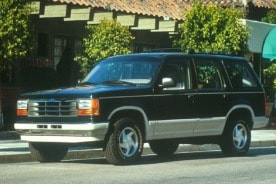
1991 Ford Explorer -- Here Comes the SUV
When Ford decided to replace its aging (and tip-over prone) Bronco II with the Explorer model in 1991, few could have predicted the impact it would have on the U.S. automotive market. At the time SUVs were still viewed as "lifestyle" vehicles, designed for those who needed both passenger capacity and off-road ability. In a few short years, however, the Explorer would become the basis for an industry-wide movement away from station wagons, minivans and even large sedans. With 400,000-plus annual sales it led the way in SUVs, becoming a primary form of personal transportation for much of the 1990s. Like most market trends, the truck-based SUV craze eventually subsided, replaced largely by car-based crossovers, but the Explorer essentially defined the U.S. automotive market for over a decade.
• Best-selling midsize SUV of all time
• Mazda Navajo and Mercury Mountaineer corporate twins
• Boris Yeltsin becomes first freely elected president of Russian Republic

1990 Mazda Miata -- The Rebirth of the Roadster
In 1990, the idea of an open, two-seat roadster built solely for the purpose of having fun wasn't new. However, it was all but forgotten by most of the automotive world. It took a company as adventurous as Mazda to revive the concept of the classic British roadster, only this time the car offered refinement and dependability along with a thrilling ride on your favorite twisty two-lane. The MX-5 Miata was the drop-top shot heard 'round the world, inspiring a reaction from BMW (Z4), Honda (S2000), Mercedes (SLK), Porsche (Boxster) and eventually even GM (Solstice/Sky). Saying it revived open-car sales on a global scale isn't an overstatement, as it quickly became, and still remains, the best-selling roadster on the planet.
• Best-selling roadster on the planet for over a decade
• The car that revived the convertible market, inspiring many of today's drop tops
• The Simpsons debuts on Fox and quickly becomes a top-rated program
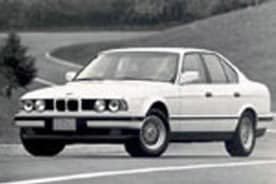
1989 BMW 5 Series -- The Ultimate Performance/Luxury Sedan
While the 1989 5 Series is considered the car's third generation, it was really the first all-new model to arrive since the nameplate's introduction in 1972. Unlike the 1982 redesign that retained much of the original 5's componentry, the 1989 5 Series was completely redesigned and tremendously improved. The all-new structure rode on a new MacPherson strut front suspension and independent, multilink rear suspension that gave the car an unparalleled combination of agility and refinement. Under the new 5's sleek hood sat either a 2.5-liter 168-horsepower inline six (525i) or a 3.5-liter 204-horsepower inline six (535i). In 1991 BMW added the 310-horsepower M5 to the lineup, completing the 5 Series' role as the ultimate performance/luxury sedan of the era.
• All-new platform, suspension and exterior design
• An unparalleled combination of performance and luxury at the time
• Ruptured Exxon Valdez oil tanker ship dumps over 10 million gallons of crude oil off the coast of Alaska in 1989
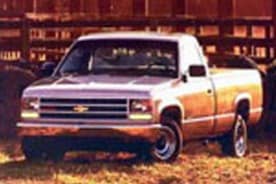
1988 Chevrolet C/K Truck -- GM's Modernizes its Full-Size Truck
The truck market is like the entertainment industry -- you're only as good as your latest entry. While GM's full-size "C/K" trucks had served the company well for over 25 years, by 1987 they were looking a bit stale. The General addressed the issue in 1988 with a full redesign that included new names (1500, 2500, 3500); a new body style (extended cab); a new transmission (five-speed manual replacing the four-speed unit); a new independent front suspension; and a new shift-on-the-fly "Insta-Trac" transfer case. New quad headlights on the top-of-line Silverado model gave those trucks a distinctive look. While sales never eclipsed Ford's dominant F-Series, this redesign kept the C/K line competitive and compelling until the next redesign -- a decade later.
• First appearance of extended-cab body style for C/K
• First use of five-speed manual transmission and shift-on-the-fly transfer case
• For the first time ever, CDs outsell records in 1988
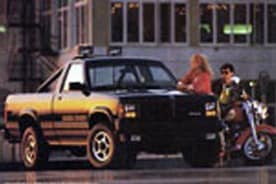
1987 Dodge Dakota -- The First Midsize Truck
It's not easy to be innovative when building a truck. The recipe is pretty simple: Make it rugged, reasonably powerful and fully capable of hauling (or towing) stuff around. Dodge didn't mess with any of these basic truck requirements when it introduced the 1987 Dakota, but the carmaker did manage to upset the apple cart in terms of how it sized its all-new "midsize" truck. Rather than forcing buyers to choose between the unwieldiness of a full-size pickup or the limited usefulness of a compact pickup, Dodge's Dakota effectively split the difference, providing carlike drivability and near full-size functionality. Offered with either a 2.2-liter four-cylinder or a 3.9-liter V6, the Dakota wasn't the quickest truck on the market. But when over 100,000 units sold that first year (more than Dodge's full-size Ram) the company knew it had a hit on its hands.
• First midsize truck, effectively offering both compact and full-size traits
• Over 100,000 units sold during first year
• Oscar for Best Actor goes to Paul Newman in The Color of Money
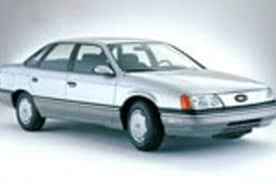
1986 Ford Taurus -- Ford's Fantastic Family Sedan
If the mid-'70s through the mid-'80s were the "dark ages" of the American automobile, the 1986 Ford Taurus could arguably be called the start of America's automotive "renaissance." For the first time in more than a decade an all-new domestic car entered showrooms with a sense of excitement and anticipation. The Taurus' sleek styling and functional interior also gave family sedan and wagon shoppers an emotion they hadn't experienced in quite some time: desire. Using front-wheel drive and flush-mounted headlights and offering either a four-speed automatic or five-speed manual transmission, the Taurus was a fully modern, highly competitive sedan that put Ford toe-to-toe with the Japanese competition of the day (Accord/Camry). The first redesign came in 1992, and from 1992 through 1995 it was the best-selling car in America -- a title no domestic automobile has held since.
• Hugely successful model for Ford; achieved "best-selling car" status for four years
• Available as a sedan or wagon; Mercury Sable its corporate twin
• The nationally syndicated Oprah Winfrey Show launches in 1986
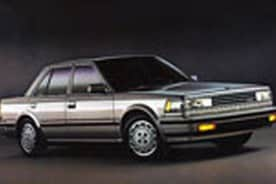
1985 Nissan Maxima -- The Four-Door Sports Car
What started out in 1977 as a traditional rear-drive, six-cylinder, four-door sedan -- dubbed the Datsun 810 -- would morph into the front-drive sport sedan called the Nissan Maxima in 1985. With a 3.0-liter 154-horsepower V6 mated to either a four-speed automatic or five-speed manual transmission, the 1985 Maxima could hit 60 mph in just over 8 seconds. With disc brakes all around and a four-wheel, independent suspension, Nissan's flagship sedan could stop and handle as well as it accelerated -- not a common set of traits for Japanese sedans circa 1985. A wagon version was offered as well, but that would end in 1989 when a redesigned, sleeker version arrived. However, it was the 1985 Maxima that set the car's tone for the next two-plus decades.
• First year for front-wheel drive
• First effective Japanese sport sedan offered for U.S. sale
• Madonna begins her first road show, The Virgin Tour, in 1985
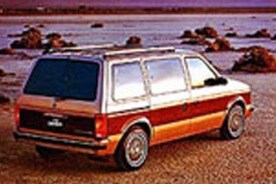
1984 Dodge Caravan -- Death of the Station Wagon
The now famous line by Lee Iacocca regarding Chrysler's 1984 minivans went something like, "It will be as revolutionary as the Mustang. It will force other automakers to create their own versions, just to compete." Not that Lido's ego needs any further boosting, but on the subject of Chrysler's all-new people movers, he was 100-percent right. The original Dodge Caravan and Plymouth Voyager were essentially glorified K-cars, but that meant they were relatively cheap to design while being an unmitigated hit with family shoppers. Acceleration with the 100-horsepower engines wasn't fabulous, but riding on MacPherson struts up front while utilizing a rack-and-pinion steering system gave the vans confident, family-friendly handling. These vans effectively spelled the end of the station wagon, and 23 years later Chrysler continues to dominate the segment.
• Over 200,000 units sold in first year of production
• First modern vehicle of its type, and the start of the "minivan" movement
• U.S.A. wins 83 gold medals during the 1984 Summer Olympics held in Los Angeles
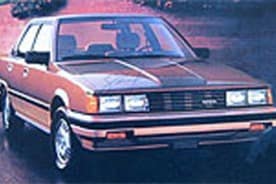
1983 Toyota Camry -- Taking the Family Sedan to a New Place
Toyota's first serious foray into the American family sedan market came with the launch of the Camry in 1983. After watching the Honda Accord's sales chart for several years, Toyota essentially took that model's recipe and built a slightly better version. The 1983 Camry was larger, offered more interior space and had a bigger, more powerful engine. And, from the start, the Camry offered either a five-speed manual or four-speed automatic transmission behind its 2.0-liter 92-horsepower inline four. Notably, Honda moved from a three-speed automatic to a four-speed unit in 1983 as well, marking the first competitive response in an ever escalating war between these future best-seller titans. Other shared characteristics, such as high build quality, solid performance and exceptional value, have kept both models at the top of consumers' consideration lists when shopping the family sedan segment.
• First year for what has become Toyota's perennial best seller
• Offered as a sedan or four-door hatchback body style
• Unemployment rate in 1983 -- 9.6%
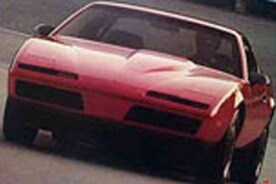
1982 Pontiac Firebird -- A Pony Car for the Post-Muscle-Car Era
Although 1982 technically saw the third generation of Pontiac's Firebird debut (along with sister division Chevy's Camaro), this was really the first "clean sheet" redesign of GM's F-Bodies since their arrival in 1967. The transition from 1969 to 1970 F-Bodies involved a radical exterior makeover, but both versions were quite similar underneath the skin. The first two generations rode on a front subframe (with A-arms) bolted to a unibody platform. Out back, leaf springs supported a solid rear axle. For 1982, the Firebird was completely reborn with a full unibody platform, a MacPherson strut front suspension and a coil spring rear suspension, all of which combined to greatly improve the Firebird's stability and handling. Externally, the car broke new ground (and broke from its Camaro corporate twin) with a sleek, aerodynamically efficient body featuring fold-away headlights -- a feature that would remain a Firebird trademark until production ended in 2002.
• First year for full unibody platform, MacPherson struts and rear coil springs
• First year for fold-away headlights and fuel injection
• Best-selling album of all time: Michael Jackson's Thriller, released in 1982
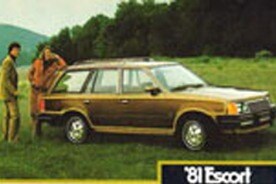
1981 Ford Escort -- Ford's First World Car
Ford already had a European model called "Escort" in 1981, but this was the first year it introduced the nameplate to its American customers. As with the 1978 Dodge Omni, Ford knew it needed a front-drive, fuel-efficient small car to compete with the likes of Honda (Civic), Toyota (Corolla) and Volkswagen (Rabbit). For 1981 the Escort came as either a two-door hatchback or four-door wagon, both equipped with a 65-horsepower 1.6-liter four-cylinder engine. A four-wheel, independent suspension, along with rack-and-pinion steering, gave the car a relatively sporty feel in terms of handling. Just one year after its introduction the Escort earned the title of "Best-Selling Car in America." Over the next two decades it would represent Ford in the economy-car segment before ultimately being replaced by the Focus.
• Best-Selling Car in America for much of the 1980s
• Sister vehicle called the Mercury Lynx
• Ronald Reagan sworn in as 40th president in 1981
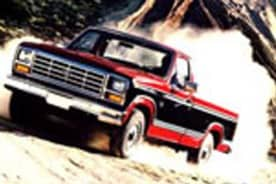
1980 Ford F-Series -- The Best-Selling Vehicle on the Planet
In 1978, Ford's full-size truck became the best-selling vehicle (including cars and trucks) on the planet. This put extra pressure on the Blue Oval engineers when it was time to redesign the F-Series. As such, they took an evolutionary rather than revolutionary route when approaching the 1980 model. Exterior styling adopted a slightly more aerodynamic front end that featured a laid-back, smoother grille. Interior room increased, and body configurations included the Regular Cab or SuperCab in short- or long-bed versions. Base engine was 4.9-liter straight-6, but several V8s, ranging in size from 5.0 liters to 7.5 liters, were offered during this generation (1980-1986) of F-Series. Even a diesel engine was added in 1983. In 1984, the "F-100" base model was replaced by the "F-150" designation that remains the basis of Ford's highly successful full-size truck.
• First full generation (1980-1986) of the best-selling F-Series
• Increased interior space and wide range of engine options, including diesel
• Ted Turner launches the Cable News Network (CNN) in 1980
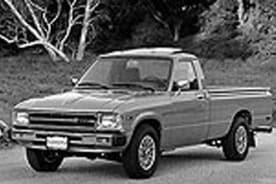
1979 Toyota Compact Truck/SR5 -- Setting the Small Truck Standard
Toyota began building compact trucks way back in 1947, but it wasn't until 1979 when the company's small truck fully evolved into a modern and highly capable utility vehicle. It was the first year for the torsion bar front suspension, five-speed manual transmission and available four-wheel drive. It was also the first year for the high-line "SR5" trim designation; a name that continues even today. Previous compact trucks covered only basic needs in terms of ride quality and amenities, but Toyota's 1979 compact truck was actually comfortable and carlike, making it easy to drive even when there wasn't something large to haul around. The 4x4 model was extremely capable off-road, and the 2.2-liter 20R engine was the picture of low maintenance and reliability. These traits were eventually adopted by all compact-truck makers, but Toyota offered them first.
• First year for SR5 and 4x4 versions of Toyota's compact truck
• First year for torsion bar front suspension and five-speed manual transmission
• Top News Story in 1979 -- partial meltdown of Three-Mile Island nuclear power plant
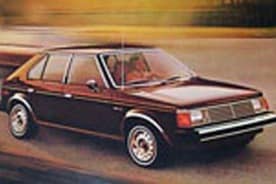
1978 Dodge Omni -- The Car that Saved Chrysler
By the mid-1970s it was obvious that rear-drive, full-sized V8 automobiles were not the wave of the future. Import models like the Civic and Rabbit were bleeding off Big Three market share while the Vega and Pinto did little to stop the hemorrhaging. Chrysler wisely took the "if you can't beat 'em ?" route and leaned on its European division to develop a rather blatant Volkswagen Rabbit knockoff (the Omni's original 1.7-liter engine was even sourced from VW). So while the front-engine, front-drive concept wasn't significant, the utilization of this design by a domestic automaker in 1978 was. Plus it came at a time when Chrysler desperately needed a product success story to help justify the government's financial assistance. Both the Omni and the government bailout would prove critical in saving Chrysler's future.
• Led Chrysler's comeback from the brink of bankruptcy
• Sister vehicle the Plymouth Horizon
• World Series Champs in 1978 -- New York Yankees over L.A. Dodgers
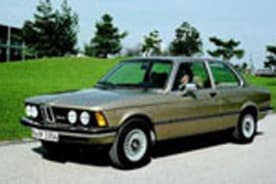
1977 BMW 3 Series -- Birth of the Modern Sport Sedan
It could be argued that the BMW 3 Series is one of the most important performance cars of the 20th century, and its introduction to the U.S. market was easily the most significant automotive development of 1977. As a replacement for BMW's highly successful 2002 model, the 3 Series used many of the 2002's styling and mechanical components, including a four-wheel, independent suspension with McPherson struts up front and trailing arms in back. Power came via a 2.0-liter inline-4 making 110 horsepower, and transmission choices consisted of a Getrag four-speed manual or a ZF three-speed automatic. The first 3 Series was available only as a two-door coupe, but a four-door would arrive in 1985. The 3 Series was an unmitigated success in the marketplace, nearly doubling BMW's total worldwide sales just four years after its introduction.
• The cornerstone of BMW's success for three decades -- and counting
• Continues to represent the benchmark in the sport sedan category
• Best-selling book in 1977 -- Roots by Alex Haley
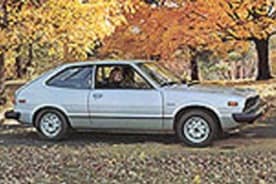
1976 Honda Accord -- Thinking Outside the Econobox
While the 1973 Civic changed Honda's image in the eyes of U.S. car buyers, the Accord went a step further by avoiding the pure "econobox" image. A roomy cabin, comfortable seating and standard premium features (for the day) included an AM/FM radio and rear defrost, all packaged in a $4,000 vehicle that continued to provide excellent fuel economy. Certainly it was still seen as a "little Japanese car" by many Americans, and with a 2,000-pound curb weight and a 68-horsepower 1.6-liter inline-4 the Accord was no Cadillac Eldorado. But in terms of power-to-weight ratio the Accord offered competitive performance. Remember, many American cars of the day weighed over 4,000 pounds while using boat-anchor V8s that struggled to cough out 140 hp. Sales skyrocketed from 16,000 in 1976 to 120,000 by 1978. Thirty years later the Accord remains a best seller.
• First year for Honda's perennial best seller
• The car that changed Honda's "econobox" image
• Top grossing film of 1976 -- Rocky
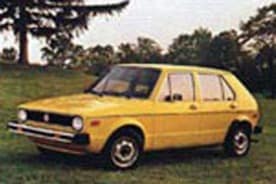
1975 Volkswagen Rabbit -- The Car that Beat the Beetle
Few cars will ever top the Beetle in cumulative sales, but Volkswagen's new 1975 economy car sold well enough to eventually replace the Beetle as VW's primary profit center. It was called the Golf in Europe, where it went on sale in 1974. A year later the first Golfs came to America, but they were called "Rabbits" -- a name that would shadow Volkswagen's new "People's Car" for its first decade in the U.S. (and return yet again in 2007). The first Rabbit's 1.5-liter engine managed a modest 70 horsepower, but the car weighed only 1,900 pounds and had a four-wheel, independent suspension. These factors, combined with its roomy interior, resulted in a car that comfortably carried four adults while providing confident handling and respectable fuel economy. Thirty years later the Rabbit/Golf continues as a cornerstone of VW's product line.
• The new basis of Volkswagen's product line (replacing the Beetle)
• An effective combination of utility, value and fun
• Song of the Year in 1975 -- "The Way We Were"
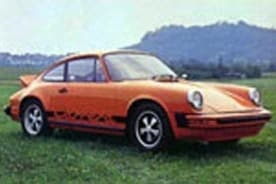
1974 Porsche 911 -- Defining the European Sports Car
Debuting in 1965 as the 356 replacement, the Porsche 911 was well on its way to defining European sports cars by 1974. The 911's success in the showroom was largely related to its success on the racetrack, so in 1974 Porsche revamped the car while introducing the Carrera model to the U.S. market. The U.S.-spec Carrera didn't get the high-performance engine offered in Europe's Carrera model, but all 1974 911s did feature a larger 2.7-liter horizontally opposed flat-6, and this was the first year all of them utilized fuel injection. Aluminum suspension components were another design improvement, and Porsche even managed to make those normally ugly, DOT-specified 5-mph impact bumpers of 1974 look good on its rear-engine sports car. So, while performance was evaporating from domestic showrooms Porsche continued to build upon the 911's legend.
• First year for the U.S.-spec Carrera model
• First year for the 2.7-liter engine and aluminum suspension
• No. 1 rated television show in 1974 -- All in the Family
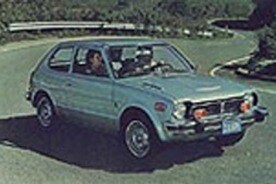
1973 Honda Civic -- Honda Enters the 4-Wheeled World
Honda's image as a motorcycle maker was forever altered when the company introduced its all-new Civic in 1973. A 50-horsepower 1.1-liter inline-4 gave the 1500-pound Civic more than adequate thrust while also returning 40-plus mpg (a vehicle spec that was rapidly gaining influence with U.S. buyers in 1973). The first Civic was tiny by the standards of the day, yet it offered functional 4-passenger seating and usable cargo space from its hatchback design (a "sedan" model was also available that first year). And with its 4-wheel independent suspension the Civic could easily out-maneuver the U.S. competition (Ford Pinto and Chevrolet Vega). At $2200 the Honda Civic represented a tremendous value -- a characteristic it continues to offer 33 years later.
• Honda's first successful U.S. automobile
• Over 16 million Honda Civics have been sold worldwide
• American Graffiti released in movie theaters
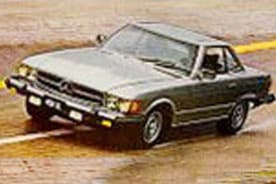
1972 Mercedes-Benz 350SL -- The Ultimate Personal Luxury Icon
The letters "SL" come from the German words "Sports Leicht", which translates to "sporty and light." Yet anyone familiar with the 1972 SL knows this was the year the car went in a decidedly non-sporty, non-light direction. When compared to the 1971 "pagoda"-style SL, the all-new '72 350SL was 300 pounds heavier and sported a 2.5-inch-longer wheelbase. It was also the first year a 4.5-liter V8 was offered in the SL (in 1973 its designation would switch to "450SL"). While purists deride the 1972-1989 SL as the model's least sporty iteration, no one can deny its influence on the luxury market. The 450SL effectively defined personal luxury for an entire generation. Everyone from Steve Austin on The Six Million Dollar Man to Bobby Ewing on Dallas piloted a 450SL, effectively sending an "I've arrived" message to the masses.
• All-new model and first year for the V8-powered SL
• Represented the epitome of success for nearly two decades
• Cost of a first-class stamp in 1972 -- $.08
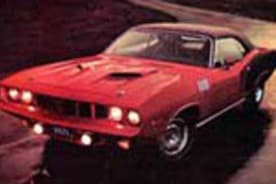
1971 Plymouth Barracuda -- The Poster Child of the Muscle-Car Era
There were several all-new models for 1971, but with the advantage of hindsight we now know that none of them (including the Chevrolet Vega and the Ford Pinto) were significant. If you ask anyone with a sliver of automotive knowledge, "What 1971 model has become an icon from that era?" you'll get a quick answer -- the 1971 Plymouth Barracuda. It wasn't an all-new model, but what really makes the '71 Barracuda significant is how it simultaneously represents both the zenith and the conclusion of the muscle-car era. It was the last year for the production Hemi and 440 six-pack engines, and the last year for the convertible E-Body. But if nothing else, consider this: What other 1971 model can now bring more than $2 million on the open market?
• Last year for the production Hemi and big-block E-body
• Corporate twin was the Dodge Challenger
• Hemi 'Cuda Convertible MSRP in 1971 -- $5,000
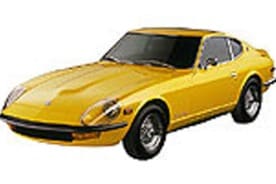
1970 Datsun 240Z -- A Japanese Car You Want To Own
The 1970 Datsun 240Z wasn't the first Japanese car sold in America, but it was the first widely known -- and loved -- model to wear an Asian nameplate. Before the 240Z, Japanese vehicles were seen as economy cars for people seeking low-cost, practical transportation. Suddenly, the 240Z gave people a reason to want a Japanese car, and not just from a value standpoint. With Ferrari-like body lines, a 2.4-liter inline 6 (making 150 horsepower) and a $3,500 price tag, the 240Z forced U.S. buyers to redefine their image of Japanese cars. Sales confirmed the car's popularity, as they jumped from 16,000 in 1970 to 46,000 in 1973. While many successful Japanese sports cars followed Datsun's (later changed to Nissan's) two-seater, the 240Z gets credit for being the pioneer.
• First successful Japanese sports car sold in America
• Exotic sports car style and entertaining performance for just $3,500
• Best Picture of the Year in 1970 -- Patton
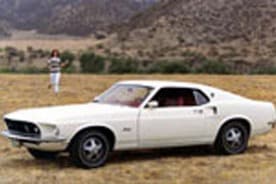
1969 Ford Mustang -- Final Act for the Original Mustang
Introduced as a 1964.5 model at the New York World's Fair, the Mustang was a certified hit by 1969, with well over 2 million units sold. And while competitors from AMC (Javelin), Chevrolet (Camaro), Plymouth (Barracuda) and Pontiac (Firebird) were crowding the Mustang's corral, it was still the best-selling pony car in the stable. Ford put new sheet metal on the Mustang in 1969, clearly breaking from the original car's style with an aggressive, four-headlight grille and more muscular rear haunches. The company also introduced two new high-performance versions: a Boss 302 for Trans-Am racing and a Boss 429 meant to homologate the 429 V8 for NASCAR racing. For many Mustang fans the 1969-'70 Mustangs represent the final iteration of the "real" Mustangs.
• Only surviving nameplate from the original pony car era
• More than 2.2 million Mustangs sold in its first six years
• Dow Jones Market High -- 952 in 1969
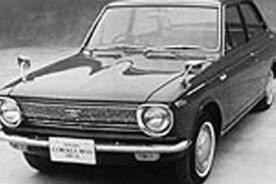
1968 Toyota Corolla -- Best-Selling Car ... Ever
The Ford Model T and Volkswagen Beetle had good runs, but with more than 30 million copies sold worldwide, Toyota's Corolla is the best-selling car in the history of the automobile. Introduced in 1968, the Corolla featured a 1.1-liter, 60-horsepower engine. It cost less than $1,700, but you couldn't get an automatic and it looked quite insubstantial compared to the full-size American beasts with which it shared the road. But it got excellent fuel mileage and never broke down -- two traits that would prove highly valuable as the swinging '60s gave way to the fuel-crunched '70s. While never much of a performance car (it got close with the 1980's GT-S coupe), the Corolla has always performed quite well in one very important area -- the sales chart.
• Best-selling car in the history of the automobile
• First car Toyota made in America
• Median household income in 1968 -- $7,743
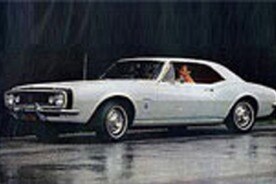
1967 Chevrolet Camaro -- The Hugger
It took Chevrolet three years to enter the "pony car" market (named for Ford's 1964.5 Mustang), but the all-new, 1967 Camaro proved worth the wait. Although it used the same platform as the upcoming 1968 Chevrolet Nova, the Camaro had a sporty and aggressive appearance combining smooth, muscular flanks with a low roof and small windows. You could get your 1967 Camaro with "Command Performance" by opting for the Super Sport ("SS") trim and specifying a 325-horsepower, 396-cubic-inch V8. The Rally Sport ("RS") appearance package added fold-away headlights and upgraded interior trim. A "Z/28" version was also introduced in 1967 to compete in Trans-Am racing. The Camaro, along with the Corvette, largely defined Chevrolet's performance image for the next 35 years until production ended in 2002. Expect to see an all-new version around 2008.
• Chevrolet's first pony car
• Corporate twin was the Pontiac Firebird
• Average price of a new home in 1967 -- $24,600
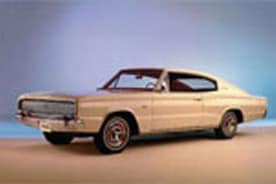
1966 Dodge Charger -- Leader of the Dodge Rebellion
In 1966 Dodge was trying to overcome a stodgy image that had America's youth flocking to cars like the Mustang and GTO (and away from Dodge's squared-shaped -- and just plain square -- Coronets and Darts). The Charger answered the call by borrowing the Coronet's unibody structure and bolting on a swoopy, fastback body, fold-away headlights and 2+2 seating with a full-length center console. This was also the first year you could buy Chrysler's famed 426 Hemi, a conservatively rated, 425-horsepower pure race motor thinly disguised as a production car power plant. The 1966 Dodge Charger was neither the fastest nor the prettiest car you could buy in 1966, but it is easily one of the most influential in Dodge's history. If you don't agree, just look at Dodge's 2006 lineup. Four decades on and you can still buy a Hemi Charger.
• First year for Charger nameplate
• First year for 426 Hemi in a production car
• Price of gas in 1966 -- 32 cents/gallon








































